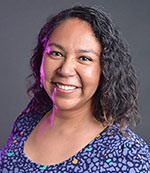
17 Aug “Collaborative Thinking” Series: Working better with over-surveyed communities
Last Thursday, August 11th Connect the Dots hosted a happy hour – the first of what we hope to be many. This was not a regular networking-and-get-along Happy Hour (which we love, of course!) – ours was a challenge-based Happy Hour, and it was great!
We invited public engagement leaders and professionals to join us, grab a glass of their favorite beverage, and think collaboratively about “Cutting through the noise: How can we work better with over-surveyed neighborhoods?”
It was such a thoughtful and interesting conversation that we’d love to share the key takeaways with you:
- Define who the population is: Back to basics! Is the population you’re trying to reach defined by residence location, by gender identity, by affiliation, by age range…? This helps inform how to better approach them and learn about who else is having similar conversations: Maybe a partnership should be part of the engagement strategy, or maybe it is something else.
- Compensate the neighborhood members for their time: The engagement process should work for them as much as it does for the decision-maker. Understanding neighborhood priorities will inform how you engage with them, including compensation for their time. From a
- Never assume, always double triple check in (Not sure which section this goes in…)
- fariness standpoint, contributors should be compensated.

We love our sticky notes and Sharpies!
- Connect with trusted sources: Recognize that the neighborhood members are experts in themselves. Knowing that, start talking to trusted sources: neighborhood leaders. The business owner of the neighborhood grocery store, salon staff, the long time resident of the area. They could be your greatest allies in better understanding neighborhood goals and needs.
- Speak their language: We’re not only talking about language access, but filling cultural gaps and being on the same page as neighborhood members are in terms of current conversations, shared concerns, predominant narratives, etc. Speaking the same language should help simplify the conversation – and maybe a survey is not what you need to understand what the community needs.
What would you add to the list? We’d love to hear about it! And if you’re interested in joining us in future Happy Hours, please let us know! We’d be glad to have you. Remember that you can always reach out to us through [email protected].
 Sylvia Garcia-Garcia is Connect the Dots’ Project Manager of Public Engagement, based in Philadelphia. She is a bicultural multilingual experienced social impact professional, passionate about centering representation and sustainability. Sylvia holds a Master’s in Strategic Thinking from Tec de Monterrey and has since worked as a consultant and project manager across sectors and countries. Her 15-year career in social impact and collective change informs her work while prioritizing knowledge sharing as key when creating social impact. She works guided by the idea that the future is created today.
Sylvia Garcia-Garcia is Connect the Dots’ Project Manager of Public Engagement, based in Philadelphia. She is a bicultural multilingual experienced social impact professional, passionate about centering representation and sustainability. Sylvia holds a Master’s in Strategic Thinking from Tec de Monterrey and has since worked as a consultant and project manager across sectors and countries. Her 15-year career in social impact and collective change informs her work while prioritizing knowledge sharing as key when creating social impact. She works guided by the idea that the future is created today.
